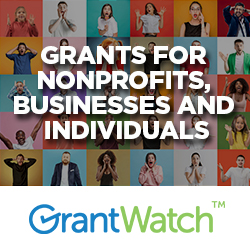Access to the archived section is available to free members. Please log in to
your free member account to view this content. If you don’t have an account yet, you can
create one for free to gain access.
Grants to USA Nonprofits, Agencies, Educational Institutions, and Tribes in Multiple States to Restore and Conserve Forest Ecosystems
Geographic Focus
USA: Alabama; Florida; Georgia; Louisiana; Mississippi; North Carolina; South Carolina; Texas; Virginia
Important Dates
Conference Date: 12/11/24
Deadline: 02/05/25 11:59 PM ET
Deadline: 02/05/25 11:59 PM ET
Short Grant Description
Grants to USA nonprofit organizations, government agencies, tribes, and educational institutions for the restoration and management of forest ecosystems in multiple states. Funding is intended to support projects to conserve, restore, and enhance longleaf pine and bott...
View Full Grant Details
Subscribe to become a MemberPlus+
Subscribe to GrantWatch
| Features | MemberPlus+ | |
| 1. | Thousands of Grants and 990 Reports |  |
| 2. | Complete Grant Descriptions and Ability to Save as a PDF |  |
| 3. | Grant Eligibility with Direct Links to RFPs to Apply |  |
| 4. | Live Customer Support |  |
| 5. | Email Updates of the Latest Grants |  |
| 6. | Real Time Personalized Grant Alerts |  |
| 7. | Affordable Pricing Options |  |
| 8. | Multi-User and Library Licenses |  |
| 9. | Keep Track of Your Grant View History |  |
| 10. | Hide Ineligible Grants |  |
| 11. | Personalized Grant Calendar with Submission Tracker |  |
| 12. | Boolean Keyword Search |  |
| 13. | SMART Advanced Grant Search |  |
| 14. | Save Your SMART Grant Search Filters |  |
| 15. | Foundation Search and IRS 990 Report Finder |  |
| 16. | Grant Recipient Profiles with Reverse Search |  |
| 17. | Save Foundations and Recipient Search Filters |  |
| 18. | GrantNews Newsletter |  |
| 19. | Grant Resources and Tutorial Videos |  |
| 20. | Priority Purchase of The Queen of Grants by Libby Hikind |  |
| PRICING & PLANS | ||


